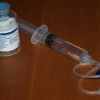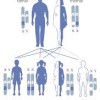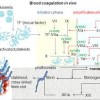Absence of human T-cell lymphotropic virus type I coinfection in human immunodeficiency virus-infected hemophilic men
Abstract
Concern for transmission of human T-cell lymphotropic virus, type 1 (HTLV-1) infection to recipients of infected cellular blood products has prompted development of tests to eliminate blood units with HTLV-I antibodies. Most hemophilic men from the United States became infected with human immunodeficiency virus (HIV) before HIV donor screening and before blood products were processed to inactivate the virus.… Read more



